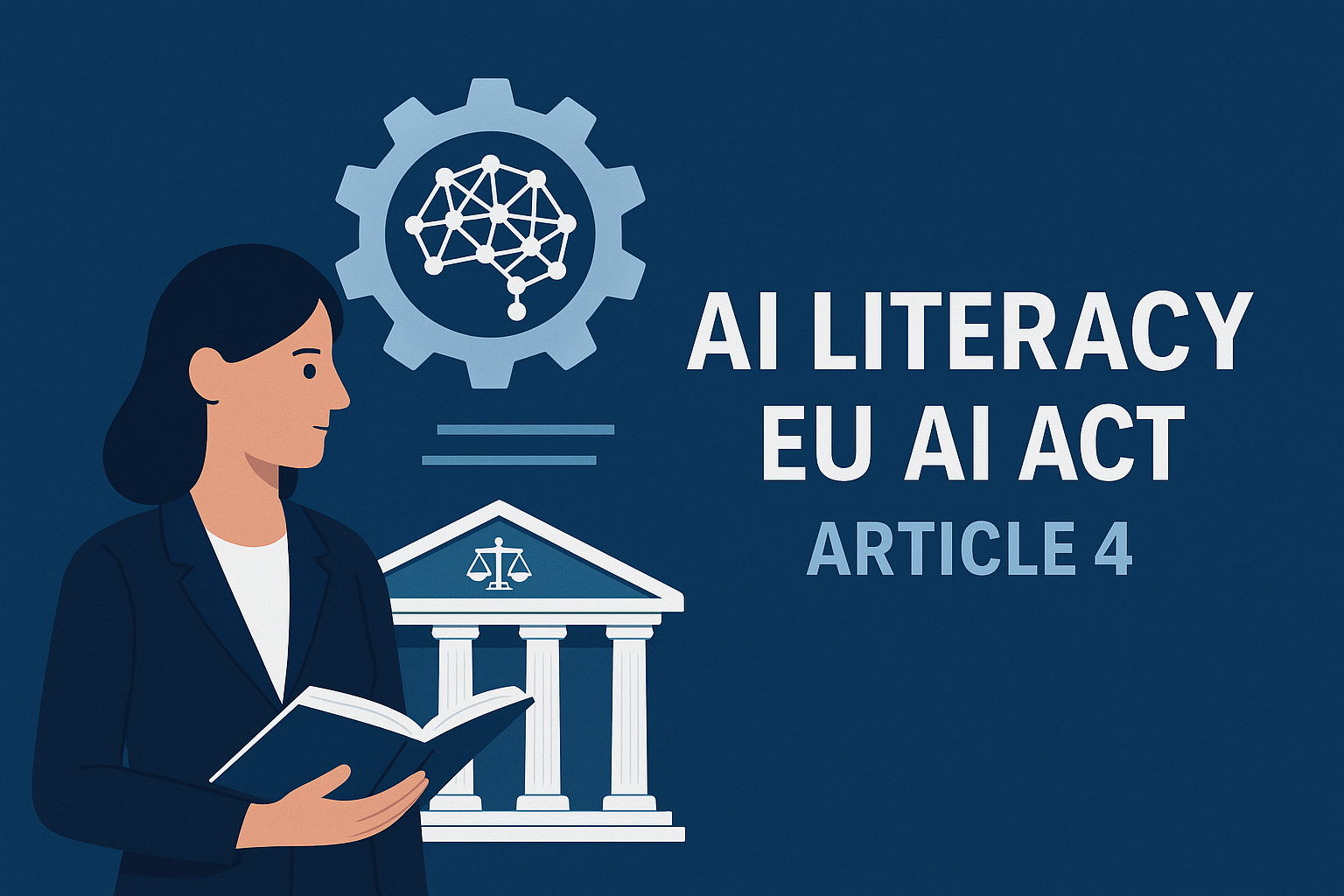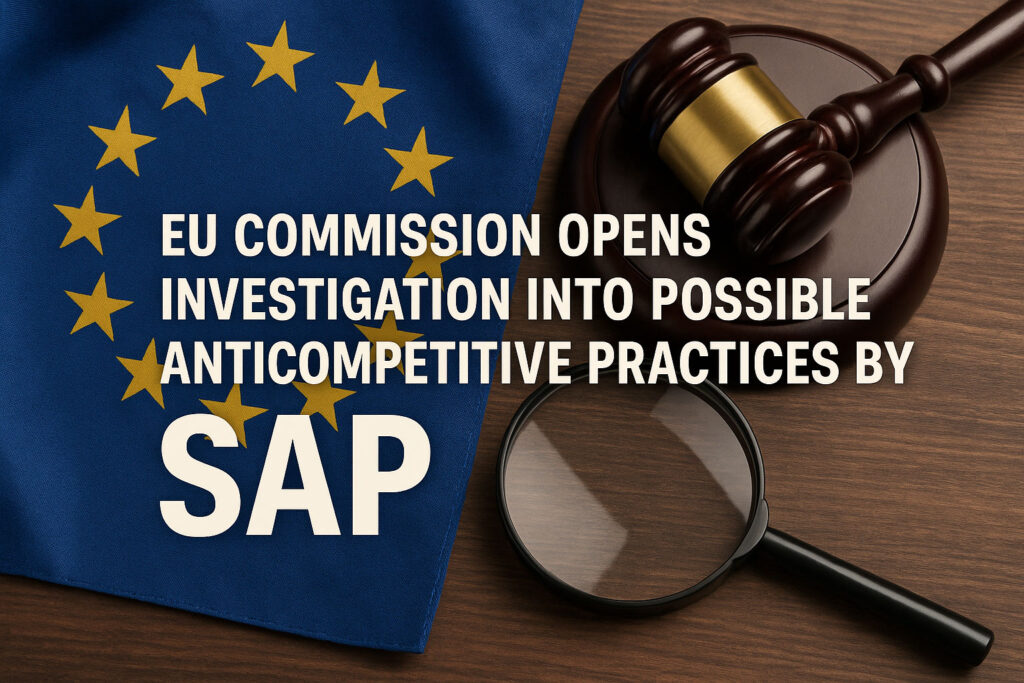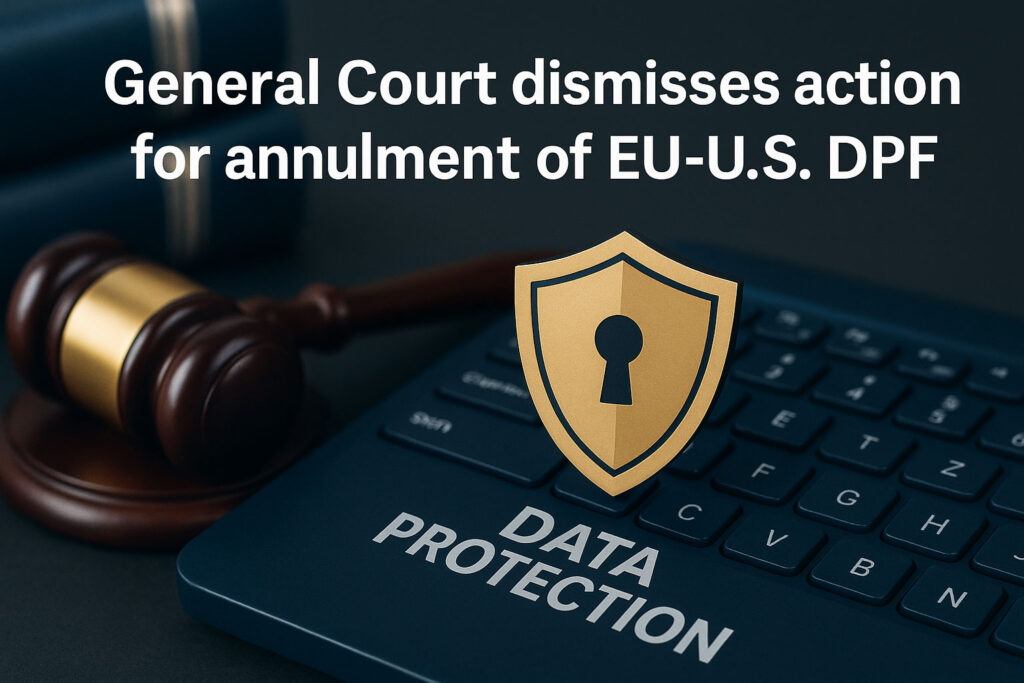The European Union’s Artificial Intelligence Act (AI Act) is the world’s first comprehensive regulatory framework for AI systems, adopting a risk-based approach to ensure safety, fundamental rights and innovation. Article 4 of the AI Act introduces a novel obligation on both providers and deployers of AI systems to secure ‘a sufficient level of AI literacy‘ among their personnel and other relevant actors. Far from a mere compliance checkbox, this requirement is designed to unlock AI’s transformative potential while proactively managing its attendant risks.
The requirement for ‘AI literacy’ is enforceable since February 2nd 2025. However, the way to comply with the requirement is rather flexible and dependent on the specific circumstances as noted in a recent webinar on ‘AI literacy’ hosted by the European Commission.

1. Understanding ‘AI Literacy’ – the legal text
Article 4 mandates that: ‘Providers and deployers of AI systems shall take measures to ensure, to their best extent, a sufficient level of AI literacy of their staff and other persons dealing with the operation and use of AI systems on their behalf, taking into account their technical knowledge, experience, education and training and the context the AI systems are to be used in, and considering the persons or groups of persons on whom the AI systems are to be used.’
The Act’s definition of AI literacy (Article 3(56)) clarifies that it comprises: ‘…skills, knowledge and understanding that allow providers, deployers and affected persons, taking into account their respective rights and obligations in the context of this Regulation, to make an informed deployment of AI systems, as well as to gain awareness about the opportunities and risks of AI and possible harm it can cause.’
Key elements of AI literacy thus include:
- Technical competence: grasping system functionalities, limitations and data requirements.
- Legal and ethical awareness: knowing compliance obligations, bias-mitigation techniques and human-rights safeguards.
- Contextual insight: appreciating how specific use-cases and user groups may be impacted.
2. Seizing Opportunities with ‘AI Literacy’
AI-literacy empowers organisations to:
- Drive Responsible Innovation
- Well-trained teams can identify novel AI use-cases aligned with business goals, while proactively embedding risk controls and governance from the design stage.
- Early understanding of compliance pathways (e.g. conformity assessments) accelerates time-to-market for high-risk applications.
- Enhance Operational Efficiency
- Personnel who understand AI workflows can optimize data pipelines, select appropriate algorithms and interpret model outputs with greater confidence.
- Transparent AI practices reduce error rates, enabling smoother integration with existing processes and IT systems.
- Cultivate Stakeholder Trust
- Clear documentation, user-friendly manuals and transparent decision-making foster confidence among customers, suppliers, regulators and the public.
- Demonstrable commitment to literacy signals ethical stewardship, supporting corporate reputation and long-term resilience.
3. Managing the Risks
Conversely, insufficient AI literacy exposes organisations to a spectrum of legal, ethical and financial hazards:
- Regulatory Enforcement
Misconfiguration of AI systems—such as biometric identification or critical infrastructure controls—can lead to breaches of EU requirements, triggering fines up to €35 million or 7 % of global turnover under the AI Act’s enforcement regime. - Discriminatory Outcomes
Lack of awareness about training data biases or validation protocols risks discriminatory decisions (e.g. in recruitment or credit scoring). Such harms may attract litigation or reputational damage. - Liability and Recall Costs
Where AI-related failures cause safety incidents, both providers and deployers may face product‐liability claims, mandatory system recalls or injunctions, magnifying financial exposure.
4. Distinct Responsibilities: Providers vs. Deployers
Although both actors share the literacy obligation, their roles and levers differ:
| Role | Core Obligations under Art. 4 | Examples of Measures |
| Provider | • Staff & external developers must be equipped to identify legal, technical and ethical opportunities or risks in example: – the model selection and training, – data collection & processing, – etc. | • Create interactive e-learning modules on system architecture and data provenance. |
| Deployer | • Assess staff or other users’ competencies and deliver context-specific training to address situations with legal, technical ethical or other social consequences. • Integrate AI responsibly into operations, e.g. by reviewing all software subscriptions for compliance. • Monitor day-to-day usage and implement human oversight. | • Allow users to express need for literacy training. • Conduct role-based workshops on interpreting model outputs. • Institute governance committees to review AI deployments. |
Recital 91 of the AI Act further underscores that deployers must ensure ‘the necessary competence, in particular an adequate level of AI literacy, training and authority‘ for those exercising human oversight and carrying out instructions for use.
5. Designing an Effective AI-Literacy Programme
As mentioned above, there is no fixed way how a ‘AI literacy’ has to be acquired. However, below is an example how an organization could get started.
- Conduct a Competency Gap Analysis
- Map existing skills against required literacy levels for each role (e.g. data scientists, legal teams, front-line operators).
- Develop Tiered Training Curricula
- Basic: Foundational modules on AI concepts and legal obligations for all staff.
- Intermediate: Role-specific deep dives (e.g. bias detection for data engineers, risk assessments for compliance officers).
- Advanced: Hands-on workshops for high-risk applications and crisis simulators (e.g. “what-if” regulatory breach scenarios).
- Leverage Diverse Formats
- E-learning, in-person seminars, sandbox labs and cross-functional “AI clinics” to foster continuous learning.
- Embed Continuous Improvement
- Regularly update content to reflect technological advances, revisions to EU guidance and lessons from incident reviews.
- Encourage feedback loops between users, governance bodies and external experts.
- Document and Report
- Maintain training records, attendance logs and assessment outcomes to demonstrate due diligence in the event of audits.
6. Conclusion: From Compliance to Competitive Edge
Article 4 of the EU AI Act reframes AI literacy as a strategic asset rather than a mere bureaucratic burden. By investing in structured, context-aware training and fostering a culture of informed oversight, providers and deployers can not only satisfy regulatory requirements but also:
- Accelerate safe AI innovation.
- Mitigate legal and operational risks.
- Strengthen stakeholder confidence in their AI-driven offerings.
Disclaimer:
The content of this blog is provided for general informational purposes only and does not constitute legal advice. While we strive to ensure that the information is accurate and up to date, it may not reflect the most current legal developments or the specific circumstances of your organization. Readers should not act upon any information contained in this blog without first seeking professional legal counsel. No attorney-client relationship is created through your use of or reliance on the information provided herein.



